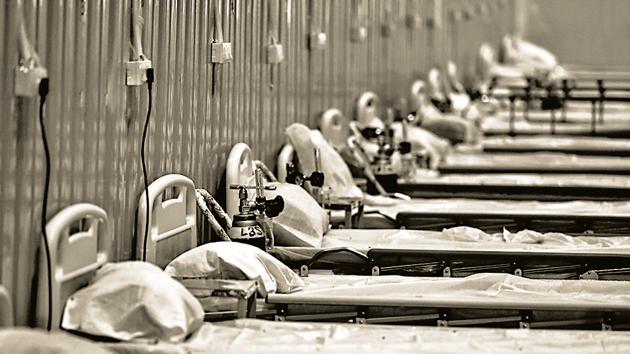Covid-19: Finally, some good news from Delhi, writes Karan Thapar
We still need to be cautious, but the reassuring part is that, as data shows, Delhi may have flattened the curve
At last, we have good news and it comes from Delhi. Six weeks ago, you would have found that hard to believe and so, today, if you’re sceptical, that’s understandable. But the facts speak for themselves and they suggest the dark clouds are parting and we can spot blue skies and sunshine.

Do you remember June 9, when deputy chief minister Manish Sisodia said Delhi could have 550,000 Covid-19 cases by the end of July? At the time, Delhi had 31,309 cases. A day later health minister, Satyendra Jain, made a more disturbing pronouncement. With the authorities unable to trace the source of infection in more than 50% cases, he believed community transmission was underway. In other words, there was no real check on the spread of the virus. It was surging through the city’s population. Not surprisingly, on June 23, Delhi recorded 3,947 cases in one day.
These grim facts found a disturbing reflection on social media. There were harrowing videos of hospital wards with dead bodies beside patients and distressing accounts of people dying for lack of treatment. Panic started to set in.
The situation is very different today. On Friday, Delhi had 128,389 cases of which 110,931 had recovered. On Monday, the tally increased by 954 cases, less than a quarter of the June 23rd figure. It was 1,025 on Friday. For the last 14 days, the daily increase has been under 2,000; for eight days under 1,500.
The best part is this is not just the surface image. The underlying picture is equally reassuring. On July 1, Delhi had 27,007 active cases. On Friday, that was down to 13,681. On July 1, 5,892 beds in Covid-19 hospitals were occupied. On Friday, that figure stood at 3,210. Much the same is true of Covid-19 patients isolating at home. On July 1, the number was 16,703. On July 24, it halved to 7,778.
The results of a serological survey conducted in late June-early July corroborate this good news. Over 23% of the city’s population has been affected by the coronavirus. They’re asymptomatic and, hopefully, the antibodies they carry will retard the spread of the virus. We don’t know how long their immunity will last and they’re way short of the 50/60% levels needed for herd immunity, but it’s still good news that almost a quarter of the city has been exposed to the virus.
So, has Delhi passed its peak and is the spread of the virus declining? Randeep Guleria, the director of the All India Institute of Medical Sciences, seems to agree. This is what he’s said to The Indian Express: “If you look at the data from Delhi, it does suggest we seem to have flattened the curve and, maybe, we are showing a downward trend.”
However, there’s still a need for caution. The trend discernible in July needs to continue for at least two weeks more i.e, for a full stretch of 28 days. That, as Dr Guleria points out, would be two incubation periods. But if we cross that Rubicon the virus is “unlikely to spread further”.
Alas, there’s another reason for doubt. Delhi’s testing is largely of the rapid antigen variety rather than the gold-standard RT-PCR. It was 75% on Monday. The problem is such negative results aren’t reliable. So although Delhi is regularly testing above 20,000 a day — except, bizarrely, on Sundays when the city presumes the virus takes a holiday — and has reached 47,828 tests per million, is the outcome misleading? Of the 363,172 antigen tests done till the 21st, 93% are negative. With 23% sero-positivity can that really be the case?
These doubts cannot be wished away but nor can you dismiss the fact that new cases are about a third of what they were a month ago. For now, let’s hold on to that and hope it doesn’t change. But we also can’t allow confidence to make us complacent. If the black clouds return they’re likely to presage more than monsoon rain.






